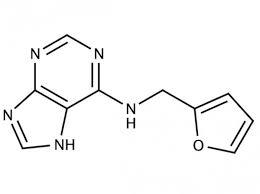Anti-aging Properties of PAL-KTTKS
KTTKS is a peptide fragment of the carboxy terminal of the propeptide for type I collagen, residues 212– 216. Discovered in 1993, KTTKS was regarded as the minimum sequence necessary to stimulate the production of collagens I and III as well as fibronectin and elastin by various mesenchymal cells. The Kp of KTTKS is low, approximately 3.16 × 10−9. Due to a molecular weight of over 500 and its hydrophilic nature, it is difficult for KTTKS to reach the skin’s dermis. Therefore, like GHK, KTTKS may be linked to a palmitoyl fatty acid derivative to enhance its permeation capacity. Pal-KTTKS is commercially known as Matrixyl, and it is 17 times more permeable than KTTKS alone.

Pharmacology Study
The ability of KTTKS to modulate ECM matrix production is not cell-specific. Through auto-regulatory feedback, KTTKS can stimulate extraceullar matrix synthesis 80% as well as the procollagen peptide in fibroblasts in a dose and time dependent manner. One study proposed that this process occurs post-transcriptionally, affecting the biosynthetic pathway of collagen synthesis rather than its export or degradation pathways. It has also been shown that KTTKS increases procollagen mRNA in the cell through acting on TGFβ. In aging skin, extracellular lipid layers forming the SC barrier thin progressively. One study showed that a mixture of Pal-KTTKS and olive oil applied to human skin cells for 6 hours upregulated the expression of genes involved in cholesterol biosynthesis, improving SC barrier function.62 Genes associated with wound healing are upregulated in cells treated with Pal-KTTKS, including lysyl oxidase, which aids in crosslinking elastin filaments to help retain the skin’s elasticity. A shortened version of Pal-KTTKS, Pal-KT, has also shown efficacy in helping smooth wrinkles and repair the skin SC.
Anti-aging Properties of PAL-KTTKS
The activity of Pal-KTTKS fragments in the cell has recently been uncovered. A recent study showed that Pal-KTTKS forms tape-like structures in human dermal fibroblasts, and can aggregate together to form fibrillar structures, with the lipophilic portion forming an internal bilayer. This suggests that the bioactivity of topical Pal-KTTKS is induced through self-assembly, and the palmitoyl addition to the KTTKS not only assists in skin penetration, but also helps organize the peptide fragments inside fibroblasts. The Sirius red assay is also used in this study to show increased fibroblast collagen production in dermal fibroblasts treated with Pal-KTTKS. One recent study also showed that Pal-KTTKS-induced procollagen synthesis is linked to the cell’s bioenergy cofactor levels, including the ratio of NAD+ to NADH. By using dill extract in addition to a three-way complex consisting of niacinamide, Pal-KTTKS, and olivem, potentiates the ability of dermal fibroblasts to produce procollagen and elastin fibers.
Efficacy data on Pal-KTTKS is extensive. Pal-KTTKS has been shown in numerous randomized control studies to improve fine lines and wrinkles, the appearance of pores on cheeks, bumpy texture, and age spots. However, one evidence-based study of topical skin rejuvenation comparing Pal-KTTKS to tretinoin, niacinamide, lipoic acid, phytoestrogens, ectoin, kinetin, and green tea extracts found that Pal-KTTKS resulted in epidermal thickening and reduction of fine lines and wrinkles better than only the ectoin, kinetin, and green tea extracts.
Ascorbic acid, or vitamin C, may also be covalently bonded to the short peptide KTTKS. Named the stable ascorbyl pentapeptide (SAP), this conjugate resists degradation at the skin’s surface, does not cause cytotoxicity, and has been shown to superiorly promote collagen biosynthesis in comparison to KTTKS or L-ascorbic acid alone. This compound inhibits tyrosinase activity and melanogenesis, showing its potential for use as an anti-aging cosmeceutical. This peptide has not yet been used in human trials.

